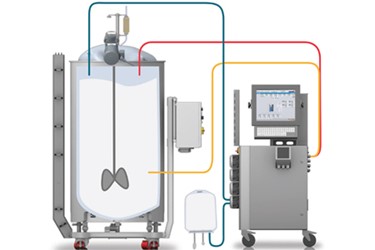The Ultimate Guide to Advanced Foam Control Techniques and Solutions
The Ultimate Guide to Advanced Foam Control Techniques and Solutions
Blog Article
A Comprehensive Guide to Implementing Foam Control Solutions in Your Workflow
Efficient foam control is a vital element of functional effectiveness that often goes neglected. Understanding the details of foam generation can considerably impact both productivity and item top quality. This overview lays out the different difficulties posed by foam and the diverse services offered, providing a framework for selecting and applying the most ideal methods. By checking out vital aspects such as application compatibility and workers training, organizations can enhance their foam administration efforts. As we check out these components, the capacity for transformative enhancements in your procedures ends up being obvious. What steps will you take next?
Recognizing Foam Difficulties
Foam obstacles are a substantial worry throughout different sectors, influencing operational performance and item quality. The development of extreme foam can prevent procedures such as blending, transportation, and storage space, resulting in increased downtime and waste. In sectors like food and beverage, drugs, and petrochemicals, foam can disrupt assembly line, triggering product variances and contamination risks.
Additionally, foam can block devices functionality, bring about pricey repairs and upkeep. For example, in wastewater treatment, foam can disrupt clarifier operations, leading to lower treatment effectiveness and regulative compliance issues.
Comprehending the underlying reasons of foam generation is crucial for efficient management. Factors such as surfactants, temperature level fluctuations, and anxiety degrees can all contribute to foam production. Identifying these components enables industries to execute targeted methods that minimize foam development while maintaining item stability.
Sorts Of Foam Control Solutions

Mechanical options entail using devices such as foam skimmers or defoamers. These devices literally remove foam from the surface of fluids, consequently preventing overflow and maintaining optimal levels in activators and tanks. Chemical options, on the various other hand, consist of the application of defoaming representatives-- compounds that interrupt the foam framework, resulting in its collapse. These agents can be silicone-based, organic, or liquid, each offering unique advantages relying on the application atmosphere.
Finally, operational methods focus on process changes. This may entail changing tools specifications, such as temperature and pressure, or altering the circulation rates of fluids to minimize foam generation. In addition, implementing good housekeeping practices can additionally reduce foam formation by lowering contaminants that add to foam stability.
Picking the ideal foam control solution includes assessing the details demands of the operation, consisting of the kind of procedure, the features of the products entailed, and safety and security factors to consider.
Choosing the Right Products
Picking the ideal foam control items needs a comprehensive understanding of the particular application and its one-of-a-kind challenges. Elements such as the sort of foam, the atmosphere in which it takes place, and the wanted end result all play essential functions in item option. Foam Control. In industries such as food processing, it is crucial to choose food-grade defoamers that conform with safety and security guidelines while internet properly managing foam.
In addition, take into consideration the thickness of the liquid where the foam trouble exists. Some products are created for use this link low-viscosity applications, while others are tailored for thicker fluids. Compatibility with existing processes is one more vital aspect; the chosen foam control agents need to incorporate flawlessly without interfering with general procedures.
One more essential factor is the approach of application. Some items might need dilution, while others can be applied straight. Assessing the ease of use and the needed dosage can give understandings right into the item's efficiency and cost-effectiveness.
Execution Strategies
Successful application techniques for foam control services need an organized approach that aligns item option with functional requirements. The initial step includes an extensive evaluation of the procedures where foam takes place, determining particular locations that require intervention. By engaging cross-functional groups, including engineering, production, and high quality assurance, companies can collect understandings that educate the selection of one of the most reliable foam control items.
Following, it is critical to develop clear goals for foam reduction, making sure that these goals are measurable and achievable. This might involve defining acceptable foam levels and the timelines for implementation. Training employees on the buildings and application approaches of chosen foam control representatives is similarly vital, as proper use is essential for optimum results.
Additionally, integrating foam control services into existing workflows needs cautious planning. Eventually, a well-structured method will improve functional effectiveness while efficiently handling foam-related difficulties.
Tracking and Examining Effectiveness
Monitoring and reviewing the efficiency of foam control solutions is necessary for guaranteeing that implemented approaches generate the preferred outcomes. This procedure entails systematic data collection and evaluation to analyze the efficiency of foam control representatives and strategies. Trick performance indicators (KPIs) ought to be developed before application, enabling a clear baseline versus which to determine progress.

Examining performance additionally requires periodic evaluations of foam control procedures and agent effectiveness. This can be accomplished with tasting and screening, permitting drivers to determine if current solutions are meeting functional needs. It is important read to obtain comments from group participants that interact with these systems daily, as their insights can disclose functional subtleties that measurable data might forget.

Eventually, a structured surveillance and evaluation framework assists recognize required adjustments, ensuring that foam control services stay reliable, inexpensive, and aligned with business objectives.
Verdict
In conclusion, effective foam control options are essential for optimizing operational performance and maintaining product quality. An extensive understanding of foam difficulties, incorporated with the selection of suitable items and implementation approaches, assists in the effective administration of foam generation.
Executing excellent housekeeping practices can likewise minimize foam formation by minimizing contaminants that contribute to foam security.
Picking the best foam control items calls for a detailed understanding of the certain application and its one-of-a-kind challenges (Foam Control).Successful application methods for foam control services require an organized method that aligns item option with functional demands.In conclusion, effective foam control services are crucial for maximizing operational effectiveness and keeping item top quality. A comprehensive understanding of foam difficulties, integrated with the choice of proper items and execution strategies, facilitates the successful management of foam generation
Report this page